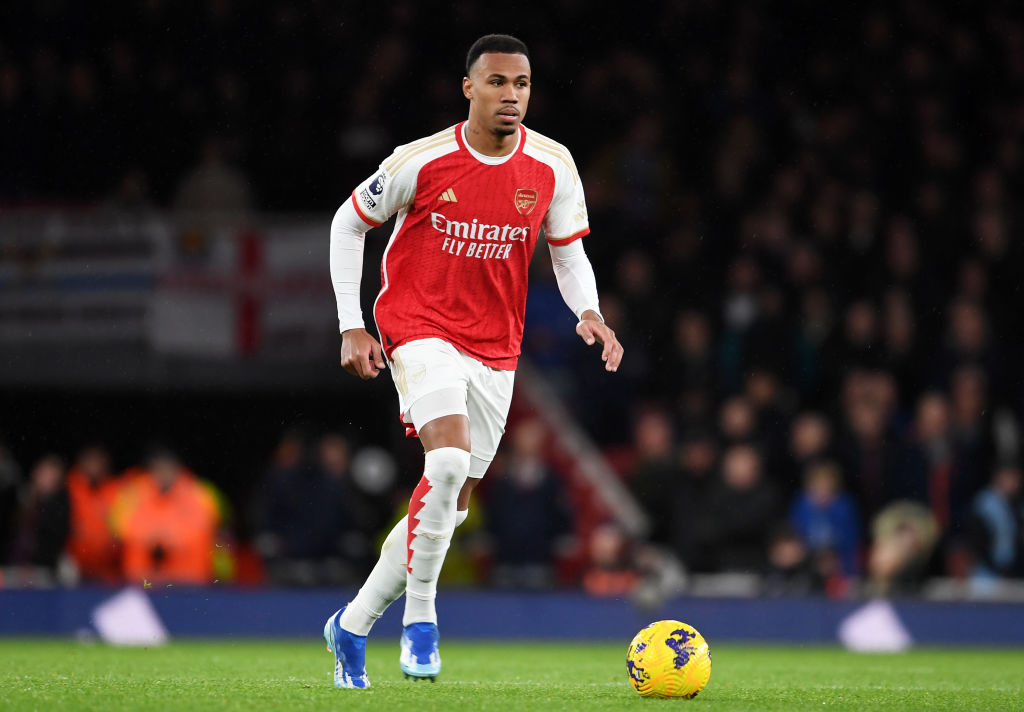Horseshoe: football tactics explained
What actually is the horseshoe? Here's your handy tactical explainer
The horseshoe. Football fans in the UK never cease to baffle continental supporters about what they consider applause-worthy during a game.
A cushioned header back to the goalkeeper when under no pressure? Always well received. And we will often explode with a roar of encouragement when our team wins a corner, regardless of how often they actually result in a goal. One of the other main examples of this is when a midfielder opens his/her body out and switches play to the other side, again when under little pressure from the opposition.
Supporters applaud it, yet it is probably one of the most simple skills any professional player will perform during a game. But how does this pass relate to a team’s tactical set-up with the ball? The answer can be found in what many are now calling the horseshoe matrix – a football term we'll break down in another tactical explainer…

I'm Jack, I've watched football through a tactical lens for over a decade, analysing trends not only at the top of the game, but also how strategies and approaches can be used at amateur level.
I’m also an FA-level 2 qualified coach and have written extensively on tactical analysis for various publications. A lot of my spare time is spent training, playing the game, or settling down to perfect a tactical approach on Football Manager.
What is the Horseshoe?
Horseshoe is the name given to the shape of a pass map when a team moves the ball around a low block without actually penetrating and breaking the lines.
The name itself is almost self-explanatory. When the attackers are positioned around another team, looking to keep possession, the formation resembles a horseshoe.
In the clip above, the team in sky blue pass the ball around a disciplined low block, waiting for spaces to appear in the opposition.
The phrase is sometimes used negatively – just as tiki-taka was during Spanish football's 2008-12 golden era – as possession for possession's sake, without the killler pass to split a defence. But more positively, the horseshoe keeps the ball moving against a low block, and ensures an attack doesn’t stagnate.
The best features, fun and footballing quizzes, straight to your inbox every week.
When facing a disciplined and compact opposition, a team will need to shift the ball across the pitch as quickly as possible. This in turn will make the defending team move from side to side to engage the ball. Slowly, the longer the attacking team has the ball, space should, almost naturally, appear.
The aim of this tactic is to wear the defensive team down by keeping the ball moving in dangerous areas. In theory, it should keep teams chasing shadows. A side employing the horseshoe against a low block will always have a spare man to pass to, even if that involves going backwards.
Who uses the Horseshoe?

The word “horseshoe” has crept into football a lot more since the 2022/23 season – and a title race between two proponents of the tactic. With Mikel Arteta's Arsenal challenging Pep Guardiola's Manchester City, both managers became ever-more dominant in possession and a bigger focus on ball retention in the final third.
City fielded two wide no.10s in Jack Grealish on the left wing and Bernardo Silva on the right, and tasked them with receiving the ball to feet, instead of making incisive runs into the box.

This formed a five-man horseshoe – along with Rodri at no.6 and City's no.8s in the half-spaces – across the five channels of the pitch behind Erling Haaland.
It was Haaland's job to push opposition defences back with his movement off the ball and threats of blindside runs – with essentially five playmakers behind him (including Rodri, as a regista-like no.6) to pick out passes. Haaland netted 34 Premier League goals that season as the Sky Blues won the Treble – but often, the runs that Haaland made were enough to create space for the likes of Kevin De Bruyne and Ilkay Gundogan to dash into the box and finish themselves.
Every good attack needs a mix of players who want a pass played into their feet and those who want it played beyond them to run into: think of your classic target man/pacy striker front two, or world-class frontlines like MSN or BBC. A horseshoe lives or dies by the balance of runners and receivers: if there's no one to stretch the defence with a run, the attacking team will endlessly recycle the ball with no penetration behind the backline.
Arteta had a similar idea, if executed a little differently. As Arsenal's technical level improved, they faced a greater number of disciplined, low-blocks than previous – finding themselves recycling the ball around the final third in a horseshoe, keeping the tempo high and often relying on late winners after considerable time sustaining pressure on opponents.
Gabriel Jesus was used in the Gunners' set-up as a false nine, dropping out of the box to help with recycling the ball, with any one of the attackers behind tasked with making runs into the box. That season, Bukayo Saka, Martin Odegaard and Gabriel Martinelli all scored 15 goals.

Arsenal's 2023 3-2 win against Bournemouth became a classic example. That season, Arsenal found a calmness and a patience, even if initially frustrated by a defensive minded opposition.
Against the Cherries, the Gunners kept possession, but also kept the tempo of the game high, using the horseshoe to move the ball quickly and efficiently. Doing this at speed has kept the crowd engaged for home games, with any nervous energy from the stands instead transmitted into backing the team.
What are the cons of using the Horseshoe?

If your team lacks creativity, you can be horseshoeing all day.
Only the best attacks can break down the best defences in most cases. An extremely well-drilled defensive opposition may even encourage their opponent to keep the ball this way, refusing to counter-press or push their team higher, since they can stay comfortable in their deeper shape.
Additionally, the horseshoe requires technically excellent ball-playing defenders – who won't be slouches in transition. In this tactic, the centre-backs will both be up on the halfway line tasked with shifting the ball to the other side as quickly as possible. They will have time on the ball, but often this can actually hinder decision-making when it comes to the next pass.
This is not so much of a disadvantage for Premier League players, but you don’t have to go far down the pyramid to find defenders not capable of manoeuvring the ball quite as effectively.

Jack has worked as a sports reporter full-time since 2021. He previously worked as the Chief Women’s Football Writer at the Mirror, covering the England Women’s national team and the Women’s Super League. Jack has reported on a number of major sporting events in recent years including the 2023 FIFA Women’s World Cup on the ground in Australia. When not writing on football, he can often be spotted playing the game somewhere in west London.
- Mark WhiteContent Editor
